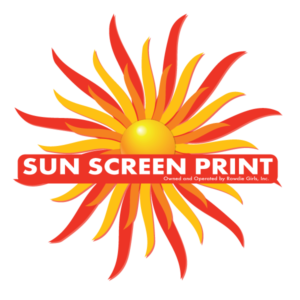DIRECT-TO-FILM
DTF has become increasingly popular. But what exactly is DTF? You should explore this decoration method for low-volume multi-color or photo-realistic designs.
What is DTF Printing?
DTF stands for Direct-to-film printing and is a heat-transfer based printing process. Your design is first printed onto a transfer film (not to be confused with inkjet film), then covered with an adhesive powder and finally transferred with a heat press to a garment or item of your choice. It is a simple process for apparel decoration however like any method of printing there are advantages and disadvantages.
Advantages of Direct to Film Printing
- Film positives, which are essential for creating a sharp and detailed print. The printed films are of high resolution and sharp edges, which allows for clean and crisp printing.
- Speed: Direct-to-film printing is a fast process, which allows screen printers to produce film positives quickly, saving time and increasing productivity.
- Cost-Effective for Day-to-day operations: Direct-to-film printing is a cost-effective method of producing film positives as it eliminates the need for traditional photographic films and the associated expenses such as chemicals and processing.
- Customizable: Direct-to-film printing allows for easy customization, which is especially beneficial for small runs or custom designs. Screen printers can quickly and easily print a unique design onto a film positive without the need for costly setup or prepress work.
Disadvantages of Direct to Film Printing
- Washability: DTF transfer do not last as long as garments that are screen printed. DTF will fade much faster than a shirt properly cured.
- Feel of the shirt: Shirts that use DTF will have a rougher feel compared to t shirts that are screen printed. In DTF the ink sits on top of the t-shirt instead of the ink soaking into the garment like in screen-printing.
- Not suitable for large production print runs: DTF is great for small print runs, for large print runs it takes too much time and materials. For an order of several thousand t shirt’s, you will need to print 200 individual transfers, cover in adhesive, and then heat press. Traditional screen printing is cheaper and more effective.
- Expensive Equipment: The cost of purchasing and maintaining direct-to-film printing equipment can be expensive, especially for small screen-printing businesses.
- Image Size Limitations: The size of the image that can be printed on the film is limited by the size of the printer. This can be a disadvantage for larger designs or those that require printing on multiple sheets of film.
- Quality Limitations: The quality of the film positive is limited by the resolution of the printer. Lower resolution printers may produce film positives that are not as sharp or detailed as higher resolution printers. DTF printing is also less vivid in terms of color depth.
- Limited Special Affects: In traditional screen-printing glitter, metallic and glow in the dark inks can be used to enhance the design. With DTF you are limited to the colors available in the printer’s ink.
